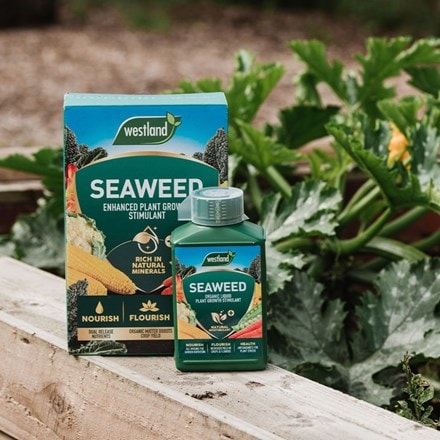Agapanthus praecox subsp. orientalis Zambezi ('Kek5006')
African lily
- 2 litre pot
- £24.99
- In stock (shipped within 2-3 working days)
- 3 × 2 litre pots
- £64.99 £21.66 each
- In stock (shipped within 2-3 working days)
Delivery options
- Standard £5.99
- Position: full sun
- Soil: moderately fertile, moist but well-drained soil, or John Innes no. 3 compost for containers
- Rate of growth: average
- Flowering period: July to August
- Hardiness: borderline hardy (may need protection in winter)
Stunning variegated foliage creates year-round drama with broad, leathery leaves featuring creamy-yellow streaks and bold golden margins.
Agapanthus praecox 'Zambezi' elevates the classic lily of the Nile with its architectural presence, crowned by globular heads of violet flowers held aloft on strong stems throughout summer.
Perfect for contemporary container designs or as a structural element in perennial borders, this drought-tolerant beauty performs exceptionally well in coastal gardens where its robust nature truly shines. The striking foliage provides a strong design element that persists through all seasons, while the long-lasting blooms make excellent cut flowers.
Though appreciative of deep watering during establishment, particularly in containers, 'Zambezi' proves remarkably resilient once settled, making it an ideal choice for water-wise gardens seeking bold, architectural impact with low maintenance.
Agapanthus praecox 'Zambezi' elevates the classic lily of the Nile with its architectural presence, crowned by globular heads of violet flowers held aloft on strong stems throughout summer.
Perfect for contemporary container designs or as a structural element in perennial borders, this drought-tolerant beauty performs exceptionally well in coastal gardens where its robust nature truly shines. The striking foliage provides a strong design element that persists through all seasons, while the long-lasting blooms make excellent cut flowers.
Though appreciative of deep watering during establishment, particularly in containers, 'Zambezi' proves remarkably resilient once settled, making it an ideal choice for water-wise gardens seeking bold, architectural impact with low maintenance.
Evergreen Agapanthus cultivars are more tender than the deciduous types, and will probably require frost protection in colder regions. Therefore, when temperatures start to drop, consider moving container-grown plants to a sheltered location (such as a greenhouse or south-facing porch), and covering border-grown specimens with a cloche, or double layer of horticultural fleece.
Keep them well-watered during the growing season, applying a balanced liquid fertiliser each month from spring to late summer. Then, in September, gradually ease back on the feeding and watering, allowing the plants foliage to toughen up. By mid-autumn, stop feeding altogether, and only water sparingly throughout the winter.
Grow garden plants in rich fertile soil in a sunny, sheltered position. When growing Agapanthus in patio pots, use a soil based compost such as John Innes No.3.
Keep them well-watered during the growing season, applying a balanced liquid fertiliser each month from spring to late summer. Then, in September, gradually ease back on the feeding and watering, allowing the plants foliage to toughen up. By mid-autumn, stop feeding altogether, and only water sparingly throughout the winter.
Grow garden plants in rich fertile soil in a sunny, sheltered position. When growing Agapanthus in patio pots, use a soil based compost such as John Innes No.3.
- Humans/Pets: Harmful if eaten
Goes well with
Peat free mature plant compost with John Innes No.3
10 litres
£4.99
In stock (shipped within 2-3 working days)





